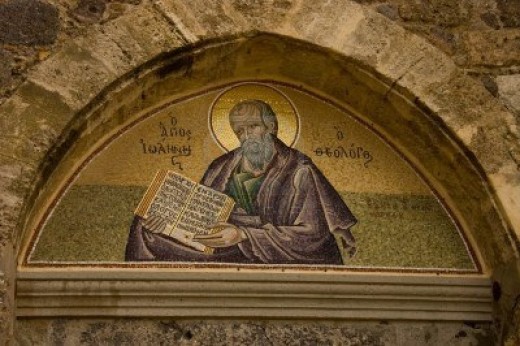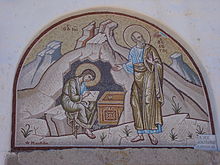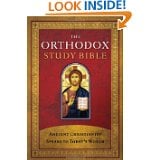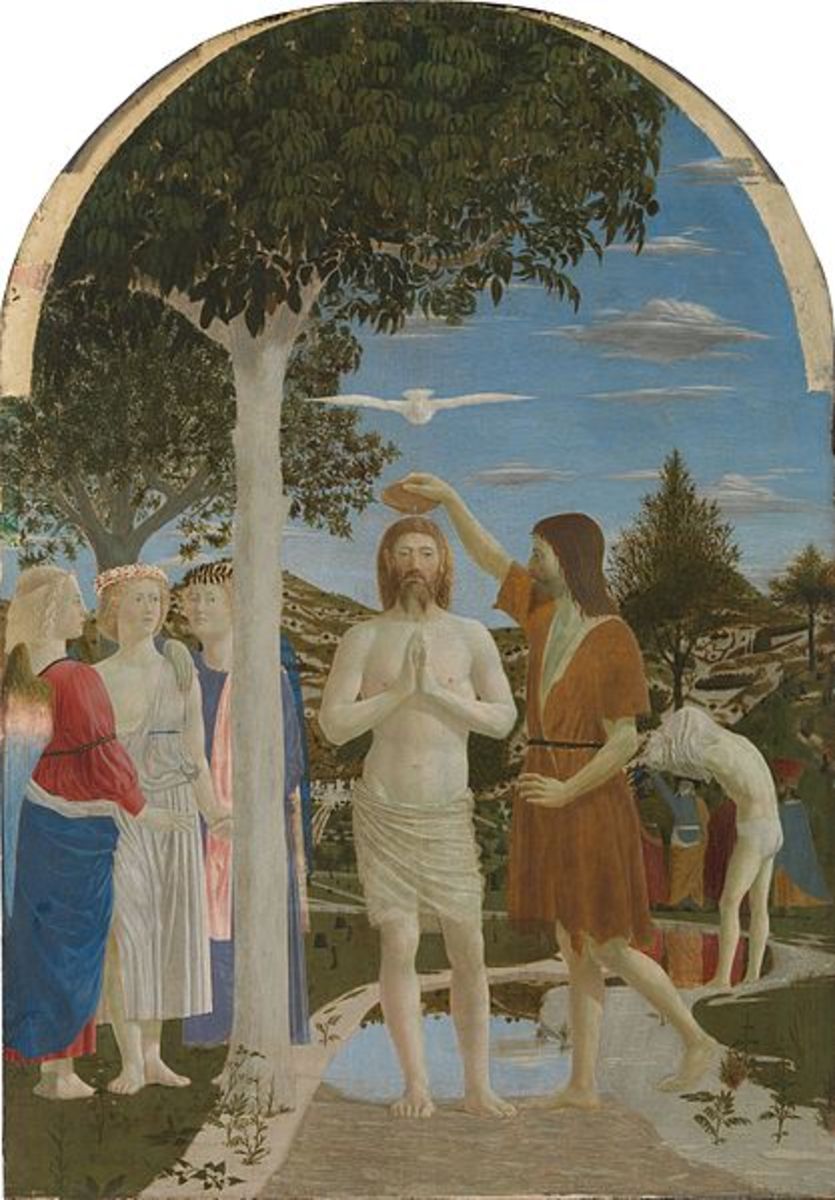From Eternal Existence To the Timeline

John the Theologian's Witness to Christ: John 1:1
In the Beginning Was the Word
John opens his gospel from the aspect of the Triune Godhead, One of Whom became incarnate for our sake. John omits everything concerning the birth of this One including His childhood, His growth to adult manhood and everything else relating to His life before His 'coming out.' John focuses on the exalted Word so intently; that he chooses not to mention the economia, the divine econmy of the incarnation; in which God arranged man's salvation after the fall by His Son and the third Person of the Godhead, the Holy Spirit.
John tells us about the Son, for the reader of his day would have already known about the Father from the earlier scriptures and, more than likely, had had exposure to the earlier scriptures that pointed to the Son. Still, he is not silent about the Father, he continually mentions the Father and His relationship with His 'only-begotten' Son.
He shows the eternal begetting of the Son when He declares, in the beginning (Greek arche - Αρχη ) was the Word, which means "from the beginning." In that the Word was from the beginning, there was no time when He did not exist, He was before time itself which is part of the creation. Bishop Brooke Foss Westcott notes that here “John carries our thoughts beyond the beginning of creation in time to eternity”, to the eternal perspective of the Triune Godhead.
Some might question at this point, how do you know that "in the beginning" and "from the beginning" have the same meaning and the answer is found in 1 John 1:1-2 when the apostle in speaking about Jesus starts by saying, "That which was FROM the beginning, which we have heard . . . seen . . . looked upon . . . and handled, of the Word of this life . . . was manifested" ties the two openings, the 'in' and the 'from' together. The early Arian heretics of the first few centuries or the babbling JW of today might claim that God the Father 'made' Jesus first and that He then created all that we know. The text does not say that the Father MADE the Son, it simply starts with the beginning of what we call the creation, the cosmos. Christ was in the beginning, eternally existing with the Father and as we discover later, with the Spirit Who proceeds from the Father.
A little further along we find that He made all things, He could not have made Himself first, then the rest of the creation - that does not make sense.
Icon of the Revelation

The Structure of This First Sentence Is Very Important
This first sentence opens up to the reader, the stately symmetry by which the whole of this gospel narrative is given starting with the three aspects of the being of the Word in Verse 1. The Word is mentioned three times in this verse with the clause "and the Word was" proceeding from the first mention of the Word, the Word was . . . and the Word was . . . and the Word was. And, each time we are given a different perspective of what Saint John is emphasizing, the being of Jesus Who is the Word. First, he shows us His relationship to time, in that Jesus was pre-existent, He was already present in the beginning. Secondly, he gives us the next aspect of Jesus, His relationship to God when he states that He was with God. And, finally, he tells us that Jesus is God. This preamble to the rest of the book, the identification of the Word of God, prepares the reader for the most important concept in the whole book, in fact in the whole canon of scripture, old and new, and that is the incarnation of Jesus Christ; and in verse 14 John specifically tells the reader exactly that, that He was made flesh and dwelt among us.
Regarding the Name of God
Some like to argue and quibble over the name of God and they come up with names such as Jehovah and Yahweh which is okay in itself, but not worth arguing over. Those who do so usually have the objective of confusing the issue of the eternal and incarnate Son, the Word of God. Many times when Jesus said to the Jews, "I AM", it offended them and they picked up stones to begin the stoning process. I don't know if that is all that He said, but it was enough for them to realize that he was stating that He was God. In Exodus 3:14 the answer to the question of Moses about the name of God is given as "I Am the Being" found in Greek from the best text, the Septuagint, "ego eime ho own", transliterated from ἐγώ εἰμι ὁ ὤν.

And the Word Was With God and Was God
Here John confirms even more clearly that the Son is co-eternal with the Father. Lest you imagine that the Father was alone at one time, John states that the Son was with the Father when everything began. It is impossible for God to exist without word, wisdom or power; therefore since the Son is the Word, Wisdom and Power of God, He must have always been with Him. From the material world, we can look at the sun and its radiance; the radiance must have been from the sun prior to its arrival on earth, can you imagine the sun without its radiance? If the Sun and its effulgence must co-exist during time, how much more must the Father, the Son, and the Holy Spirit co-exist? We can see in Hebrews 1:3, that the Son is the outshining of the Glory of God, the effulgence of the Father, and from verse 4, His express image. Can you imagine the Father not having the presence of the outshining of His Glory?
The great John proclaims that the Word and the Father are different in person, but not different in essence, their common nature. They are two persons and share the common nature of the Godhead; one in essence and undivided. And, that is enough about Verse 1. Now on to Verse 2 and following.








